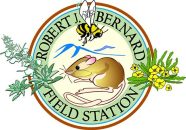Sartorius, Andrea (2016)
The effects of type-conversion and fire on sage scrub vertebrate assemblages.
Bachelor of Arts, Pomona College.
Advisors: Nina Karnovsky & Wallace Meyer.
California sage scrub is a highly endangered ecosystem due to extensive urban development in Southern California. Urban development not only removes and disturbs sage scrub, but also introduces foreign grasses which have caused fires to occur more frequently in sage scrub areas, resulting in the removal of sage scrub and further grass invasions. This grass-fire cycle has caused large-scale type conversion, ecosystem changes from sage scrub to non-native grassland, but little is known of how these changes affect vertebrates native to sage scrub. To understand how both fire and type conversion influence vertebrate assemblages, I used motion sensor cameras in two different orientations, either horizontal to the ground or facing downwards, to survey surveyed vertebrate assemblages in sage scrub, burned, and non-native grassland habitats. The study was conducted over a nine-month period at the Robert J. Bernard Biological Field Station (BFS), which contains sage scrub and non-native grassland areas, as well as a burned area that was recovering after a fire that occurred 20 months before the beginning of this study. The main species captured at the BFS were Sylvilagus audubonii (desert cottontail rabbit), Dipodomys agilis (Pacific kangaroo rat), Canis latrans (coyote), Otospermophilus beecheyi (California ground squirrel), and Zenaida macroura (mourning dove). The vertebrate assemblages remained constant during the months of this study. The horizontal cameras captured a more general survey, while the downward facing cameras captured mostly small, ground-dwelling species. I found that sage scrub and non-native grasslands supported different vertebrate assemblages, and that the nonnative grasslands had lower species richness than the sage scrub habitat. I did not find clear indications on whether or not burned habitats support different vertebrate assemblages than the sage scrub habitat. The results of this study indicate that sage scrub conservation is necessary to maintain native sage scrub vertebrate assemblages. Encouraging sage scrub recovery after fires, restoring historic fire return intervals, and sage scrub restoration projects are key to conserve native sage scrub vertebrate diversity.
